How to get rid of mold in the bathroom: effective methods
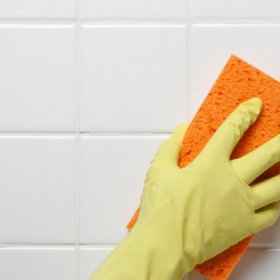
A beautiful bathroom is not only fashionable ceramics, a unique design or sophisticated furniture. First of all, this is a well-groomed appearance, which is sometimes difficult to achieve, because increased humidity is the cause of mold. Consider how to remove the fungus in the bathroom so that the walls and ceiling sparkle with cleanliness and are safe for health, and what preventive measures can be taken to prevent a catastrophe.
Content
Causes of mold in the bathroom
Oddly enough, but mold spores are constantly present in almost any room, as they easily move through the air. They do not always develop, because special conditions are necessary for the formation of colonies - heat and high humidity. That is why it is impossible to meet living foci of mold in a rustic house frozen in winter or in a constantly ventilated room. The bathroom, on the contrary, seems to be created for the propagation of spores: the heating system maintains the required temperature, and humidity arises from the constant use of water.
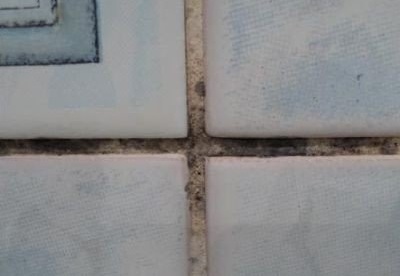
If in time you do not pay attention to small black dots in the corners and at the joints in the bathroom, at the seams between the tiles, in the future the foci will grow in all directions
The fungus can choose almost any surface from its habitat, from wood to plastic and even silicone sealants. As soon as the air humidity overcomes the threshold of 90-95% (and 70-80% is considered the norm), as spores, falling on a damp surface, begin to germinate, forming small colonies. In the future, if you do not remove them in time and do not get rid of excess moisture, small black or greenish spots will turn into vast foci that are constantly increasing in volume.
It is easy to recognize the appearance of mold - it is enough to catch the smell of damp, mushrooms. So it smells in cellars and damp basements. The fungal colonies sprout not only on the walls - dark spots occur on the furniture, the back of the washing machine, below the shower tray, where condensation is common. Condensation occurs when there is a sharp drop in air temperature in a wet bathroom. Steam under these conditions settles with water droplets.This damp surface is an excellent environment for mold development.
There are many varieties of molds that are afraid of ultraviolet radiation. They begin to develop in the dark corners of the bathroom. The lack of windows in the bathroom and insufficient lighting are another reason for the multiplication of the fungus.
Excessive humidity and stagnation of warm air, as well as the darkness that mold loves, is created with constantly closed doors, when natural ventilation and free air circulation are impossible. The ventilation system in rooms with high humidity should be forced, and in private homes it is recommended to build in at least a small window for ventilation.
According to building rules and regulations, when carrying out repairs and construction works in a bathroom, bathroom or kitchen, an obligatory step is to conduct antiseptic processing of all surfaces with special compounds that prevent the appearance and growth of molds on the surface and inside the materials of the floor and walls. Mandatory is the waterproofing of the floor and walls, preferably the ceiling in the bathroom. These measures protect the room from excess moisture.
Hidden leaks caused by faulty plumbing equipment and utilities, when water drips and seeps a little into walls and floors, contribute to dampness and growth of mushroom spots.
What is dangerous fungus
There are a lot of varieties of the fungus, but all of them can be conditionally divided into three large categories: blue fungus, rotting and mold. The first variety is not afraid of urban bathrooms, as it is formed on wood, especially on pine products. Brown, white and bacterial rot also threatens the tree, and it is almost impossible to get rid of it. In urban conditions, you should beware of mold, which can appear on concrete, and on masonry, and on paint. Sometimes he skillfully hides under the tiles, so his appearance can not be noticed. In one or two years, black mold can corrode concrete and other construction and finishing materials.
Mold spoils the appearance of the finish, it is dangerous for building structures, but the main harm from its appearance is a threat to human health. Volatile substances through the respiratory tract enter the human body and cause a whole range of dangerous diseases, the use of infected bath accessories causes stomatitis, thrush, mycosis, asthma, allergic reactions, dermatoses and even joint diseases. Sometimes a signal to the fact that a fungus is wound up in the house can be ongoing headaches.
Video: what is dangerous mold
How to avoid high humidity
Before removing the fungus in the bathroom, it is necessary to create such conditions under which its new appearance would become impossible. Of course, the air temperature cannot be changed; therefore, humidity must be reduced. To do this, you need to check for leaks or places in which water accumulates. Often a small crack in the pipe causes a non-drying puddle to appear that is out of sight, for example, under a bathtub or in a corner behind a washing machine. Accordingly, if leaks are found, it is necessary to eliminate them.
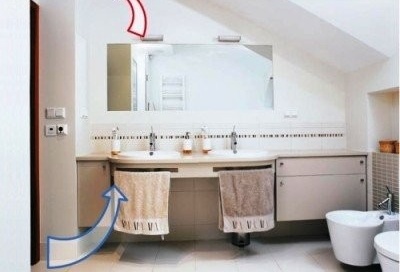
The necessary air circulation in the bathroom is achieved in the traditional way - using the exhaust ventilation device, while in the hood you can additionally install a fan
The second thing to do is to establish ventilation. Air must circulate freely in the space of the room, for this there are exits to the ventilation shafts. If natural ventilation is impaired, it is worth considering installing a forced one, for example, installing a special device in the ventilation opening. Also, do not turn the bathroom into a dryer - in this case, the appearance of mold is guaranteed.Preventive measures will protect the walls and furniture from the fungus, and residents from diseases.
How to get rid of mold in the bathroom
If mold does appear, you should immediately get rid of it, otherwise the colonies will begin to spread throughout the bathroom, moving from the walls to the ceiling, floor, mirror, furniture.
First, in any case, it is necessary to mechanically and chemically remove the foci of mold, rinse the black dirt with antiseptics from the walls and tiles, baseboards and taps, cabinets and shelves. Rags after removing stains must be disposed of. Clean surfaces can be treated with antiseptics.
Along with the "grandmother's" methods of destroying a harmful fungus, which consist in treating infected surfaces with available household chemicals, there are cleaning technologies with special aggressive antiseptic solutions. Consider both options.

If you immediately pay attention to the appearance of the fungus and do not postpone the process of getting rid of it in a long box, the work on removing mold will take a minimum of time and effort
Popular folk remedies
Zealous owners over many generations of successful mold control have developed safe and effective methods to get rid of fungus. All the means for this can be found in every house and apartment. These are simple and inexpensive tools:
White vinegar
A remedy effective for removing small fungal colonies is the usual white vinegar, which the prudent housewives always keep in reserve for cooking or cleaning the room. This product is natural, absolutely safe for health, the only thing that remains after its application is a specific smell, which will also disappear soon.
The procedure for using vinegar to remove mold:
- Pour the vinegar solution into the spray gun or dab a cloth.
- Apply to affected areas and leave to dry;
clean the surface with a stiff brush. - Rinse with clean water.

There are many varieties of vinegar, but to combat mold, you need the one that we use when cleaning the apartment - ordinary white vinegar, without aromatic additives and herbs
Ordinary vinegar can destroy up to 80% of various types of mold, therefore, despite its safety for the human body, it is a real weapon against the fungus.
Baking soda
Soda is an absolutely safe tool used in everyday life. A solution of one teaspoon of soda in a glass of water needs to be applied to the surface, it does not need to be washed off completely, it prevents the re-development of pathogenic microflora.
Hydrogen peroxide
Already not in the refrigerator, but in the medicine cabinet you can find another effective tool - hydrogen peroxide. It has an antibacterial effect and copes with the destruction of small colonies of the fungus. Peroxide can be cleaned not only tiles, bricks or concrete, it copes with the destruction of plaque on furniture, plastic and rubber surfaces. The only thing you should not forget is its light whitening effect, useful in removing mold stains, but unnecessary for cleaning dark plastic. The procedure is the same as when using vinegar.
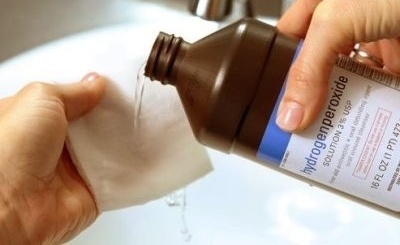
Despite the fact that hydrogen peroxide is not toxic, its high concentration (over 3%) can cause skin burns, so when using a strong solution, gloves must be used
Ammonia
Liquid ammonia has a pungent odor; it works great on smooth surfaces, such as tiles or glass, but is ineffective on porous materials. An hour after application it should be washed off with water.
Tea tree oil
Tea tree oil is safe, it is a natural antiseptic with bactericidal properties and a pleasant smell. Rinse off the solution is not necessary.
Copper or iron sulfate
Copper or iron sulfate is very effective, but toxic to humans, so the treatment with this solution should be carried out in compliance with chemical safety measures. The solution must be washed off with water after some time.
Boric acid
This tool gives an effect, especially in the following combination: water, peroxide, vinegar, boric acid in a ratio of 4: 2: 2: 1.
Household chemicals
Household chemicals also have the necessary properties:
- The laundry bleach acts similarly to chlorine, but the concentration of the active substance in it is much lower, so processing is carried out several times. It can corrode the skin of the hands, so the use of gloves is advisable.
- Household chlorine-based cleaners or saturated chlorine kills mold. Apply bleach to stains of the fungus should be in gloves and a respirator.
The most dangerous of these means is chlorine, so when using it, do not forget to wear gloves and ventilate the room.
Professional antiseptic market overview
Professional tools for removing fungus appeared in stores relatively recently, and before that they used solutions, which are a kind of poison for mold. Some of them, by the way, are quite dangerous for humans, so before using them, protective measures must be taken: wear protective clothing, gloves, and in some cases a respirator. During the processing of the premises, children and animals should not be in the apartment at all.
Before starting work, the size of the disaster should be estimated. A few black or brown spots do not cause great concern, for their destruction a construction knife and swab dipped in detergent for plumbing are enough. Large foci, growing 10 cm or more, require a serious approach.
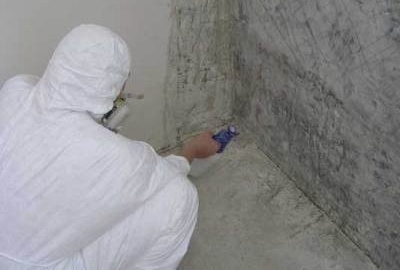
If the foci of mold have reached enormous size, and the fungus began to spread deep into the walls and penetrate into neighboring rooms - it's time to call a team of professionals
You can destroy the fungus or mold in the bathroom with an antiseptic composition. Manufacturers of chemicals and paints and varnishes produce special anti-mold and mildew agents, affordable in cost but very effective in use. As a rule, they can be easily found on the shelves of building supermarkets.
Special composition "Antifungal"
The company "Areal +" produces the antiseptic composition "Antifungal", which can be used with equal success both at the stage of repair and upon detection of fungal foci. With a roller or brush, the solution is applied to almost any type of surface: brick, concrete, plaster, wood. For preventive purposes, "Antifungal" is added to wallpaper glue or paint (so that it does not exceed 1% of the total mass). The advantage of the composition is that it is non-toxic and safe.
The use of "Isocide" against the fungus
The Kharkov company "Upringservis" produces a series of products under the brand name "Isocide", designed to prevent mold on wooden, concrete, plastered, stone surfaces. In addition to mold, “IZOCID” destroys microalgae, blue and other microorganisms dangerous to human health, which reproduce in places with high humidity, including in bathrooms. Perfect as a base for water-soluble paints.
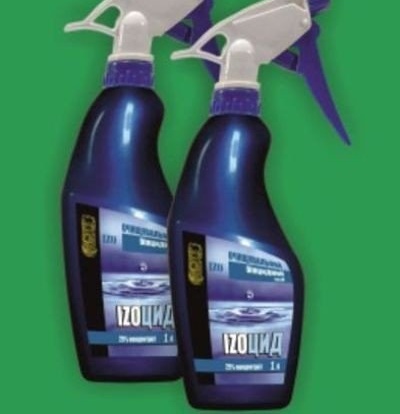
The biocidal antiseptic "IZOCID" can be used at various stages of repair, adding it to water-soluble paints, chalk compositions, cement mortars
Latex emulsion "MIL KILL"
The company "Stenotech" produces a latex emulsion "MIL KILL", which prevents the appearance and development of molds due to its antimicrobial substance.It is most effective when processing walls with a finely porous structure; it is suitable for treating leaks and any products located in places with high humidity. Destroying the spores of the fungus, it is absolutely safe for humans, therefore it is used in kitchens and bathrooms.
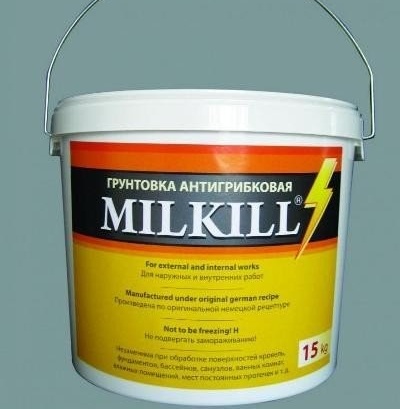
Before treating the surface with the MIL KILL emulsion, large foci of the fungus must be removed with a stiff brush, and residues must be removed with a cloth moistened with clean water
Antiseptic "DALI"
Universal antiseptic "DALI" of Russian production is suitable both for the destruction of already existing foci of fungus, and for preventive maintenance. It is a colorless, water-based solution, safe for humans and animals. It also prevents the appearance of wood-damaging insects, therefore it is useful for bathrooms in the decoration of which wood was involved.
In addition to special means, to remove plaque, you can use the mechanical method, but only if the material allows.
Ionizer checker
An innovative means of getting rid of the fungus is a checker-ionizer. This simple and brilliant invention can be used even in marble bathrooms, it does not contain chlorine, the active substance is silver. After cleansing with a disposable ionizer, a light pleasant aroma of flowers is felt in the room.
Use the checker as follows:
- turn off forced ventilation and close the window;
- put a container of water in the center of the bathroom;
- activate the checker and close the door;
- an hour and a half, while the product is working, do not tear the door;
- ventilate the room, turn on ventilation, do not need to rinse the product.
Smoke penetrates into all the smallest cavities and crevices, inaccessible places and kills all mold and rot, spores of the fungus in the air. After this procedure, the bathroom becomes completely safe.
Killing mold on the vine
If all these measures do not lead to the desired result and the fungus appears again, then the lesion is under the finish or in the hidden cavities inside the walls and you will have to resort to radical measures. The same technology should be followed if antifungal cleaning is carried out during the repair process.
- First you need to identify and mark the areas affected by mold, while taking into account the possibility of hidden foci. Remove trim from walls or other surfaces.
- Moisten the opened foci of fungus with water to prevent spores from entering the air.
- Spray an antiseptic or impregnate against a fungus, capturing not only stains, but also a clean surface, treat with an ionizing checker.
- Wait for drying and repeat the treatment as many times as necessary.
- To clean the walls with a wire brush or a spatula and remove dark fungal stains and the remnants of the old finish.
- Once again impregnate a clean surface with an antiseptic, waterproof if necessary with a coating, impregnating or roll material. Waterproofing in the bathroom should be laid not only on the floor, but also on the walls, and with extreme humidity - and the ceiling.
- Re-lay the tile using a waterproof grout with antifungal additives, or another finish, paint, under which an antiseptic primer is applied.
Mold Prevention
After the repair, it is necessary to regularly carry out simple preventive maintenance and follow the rules that will protect residents from the reappearance of any biological lesions.
- Be sure to have heated towel rails in the bathroom, or similar heating systems that dry the air and reduce humidity.
- Check the operation of forced ventilation, ensure the ventilation of the room and a sufficient level of lighting. The door to an empty bathroom is best kept open.
- It is not recommended to arrange drying of linen and textiles in the bathroom, it is better to arrange a convenient place for this on the balcony or loggia.
- Joints between trim elements and tile seams should be hermetically sealed.
- After bathing procedures and taking a shower, it is advisable to wipe all surfaces dry from condensation, depriving the fungus of moisture.
- Regular cleaning and washing of tiles, plumbing and all interior elements with special detergents.
- Antiseptic treatment in prophylactic concentration, inspection of surfaces for stains.
- Repair all cranes, pipes, ladders, troubleshoot equipment problems.
With the help of such measures that you can take on your own, the bathroom and kitchen will become your favorite places in the house, where households relax after a busy day or have useful water procedures, will be completely safe for health, sparkling cleanliness and comfortable.
Related videos
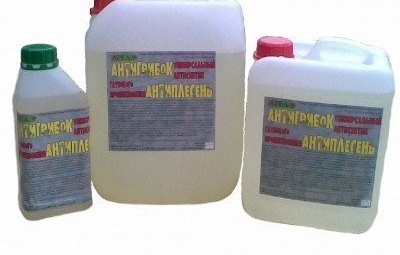
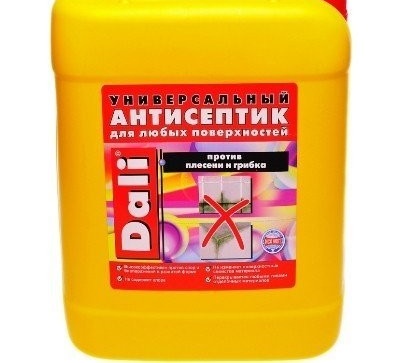

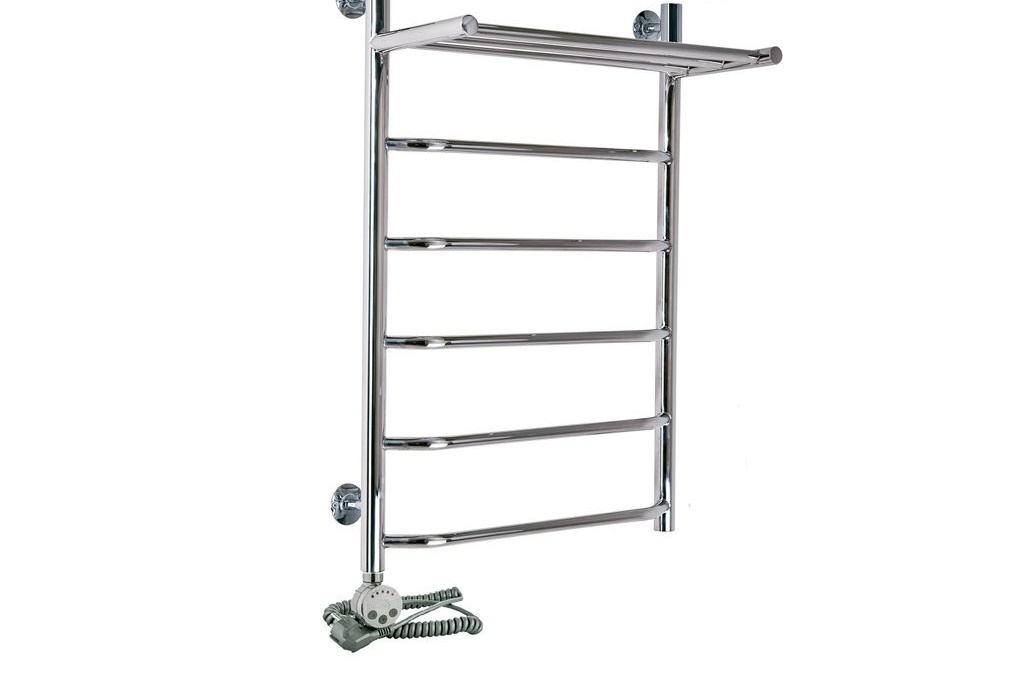
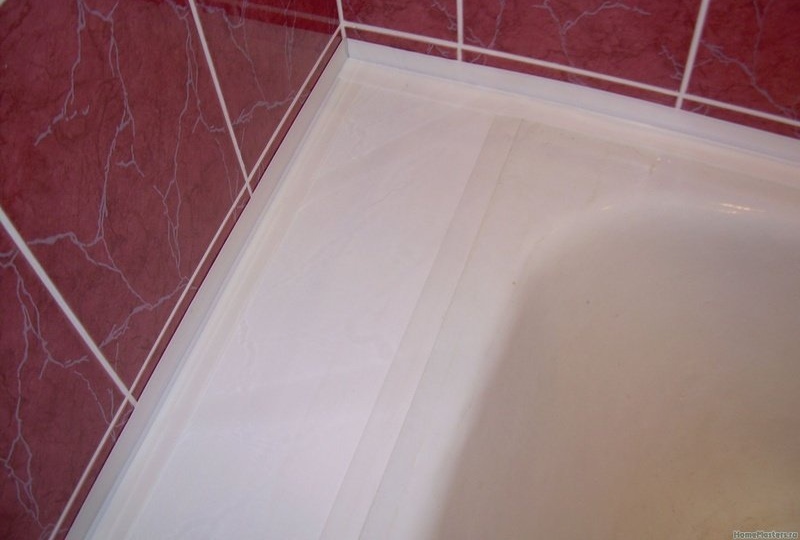

2 comments